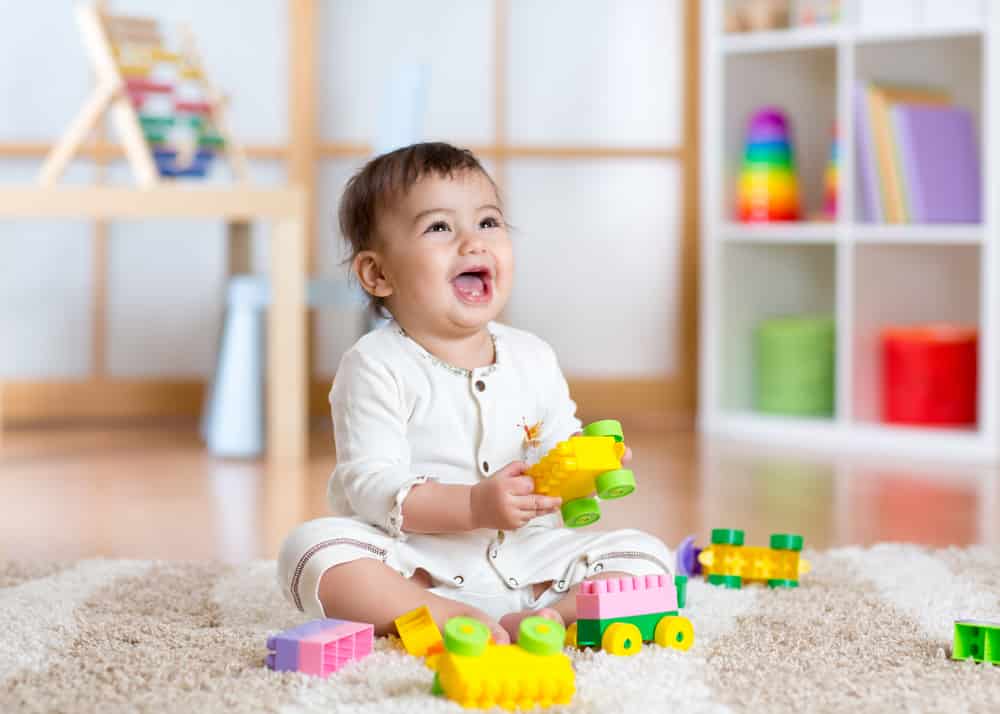

How To Help A Child That Cries Over Everything, In 5 Steps
While some parents have children that are quiet and reserved, there are just as many other families that have at least one kid who seems to cry all of the time. It can be hard for many parents to deal with, especially if the behavior goes on for years. However, while it is easy to get angry and hope that the problem will go away, the better option is to learn why they are crying and help them to regain better control over their emotions. Let’s talk about how to help a child that cries over everything in five steps.
Key Points of Calming a Fussy Child
There is no one-size-fits-all approach to soothing a crying child, however, try some of these tactics:
- Singing to the baby
- Speak to them calmly
- Rock the baby in a chair or your arms
- Comfort them with a hug
- Teach them to self-soothe
Step 1: Learn Why You Have a Child That Cries Over Everything

©iStock.com/Jun
Before you take any major action, it is a good idea to think of the reasons why your baby cries so often in the first place. Some children can be a bit more emotional in general. However, there are other reasons your kid may cry and it's important to identify the issue first, if possible. Here are a few reasons and what you can do to resolve them:
Stress
One reason could be that a child is dealing with stress. Anxiety can get the best of all of us, and your children may be dealing with trouble at school or have issues learning new skills. Other children may have a short fuse and get upset if they don’t get a certain meal for dinner or lose a life in a video game.
If your child is of talking age, you can tell if the issue is stress by asking them why they are upset. If they are unable to speak, then you can try to figure out the issue by the process of elimination. Take a meal or activity out of their routine until they aren’t crying anymore.
Your Child May Be Tired
A major reason why people of all ages become crabby or start crying is that they are tired, and that may be the case with your child. Many children cry because they are tired. Either they need a nap, or they aren’t getting enough sleep at night. The answer to their crying fits may be that you need to move up their bedtime. They may not be getting enough rest. You can ensure that they get what they need by following this chart:
| Age Range | Required Hours of Sleep |
|---|---|
| Infants 0-3 months | 14-17 hours of sleep, including naps. |
| Infants 4-12 months | 12-16 hours of sleep, including naps. |
| Toddlers (1–2 years) | 11–14 hours, including naps. |
| Preschool (3–5 years) | 10–13 hours, including naps. |
| School-age (6–13 years) | 9–12 hours at night. |
| Teens (14–17 years) | 8–10 hours at night. |
They Might Be Getting Too Much of Something
Just like adults, children can often cry because they are getting too much of something that is driving them a bit crazy. That may be something like too much sugar or irritation from watching too much television. If your child is too wired and they cannot fall asleep, then they may get agitated and start crying. Again, you can learn if this is the reason for their constant crying by going through the process of elimination to determine the culprit.
They May Just Be Extra Sensitive
Sometimes, it may not be a specific factor that triggers a crying fit, you may just have an extra sensitive child. If so, there is not much you can do about it. Some children are simply wired that way, and you may just have to be as nurturing as possible and learn as you go along. Some signs of a sensitive child include:
- They are easily startled.
- They don’t enjoy surprises.
- A child may ask a lot of questions.
- Your child may be especially unhappy with big changes.
- They are happiest and perform their best when strangers are not around.
- They don’t like scratchy labels on clothing rubbing against their skin.
The best thing to do in this situation is to have conversations with your child and try to understand their feelings. If you know that you may deal with a lot of crying in the future, then it may be easier to tolerate and find solutions.
Step 2: Avoid Telling Them to Just Stop Crying
Keep in mind that you will not always be able to get to the root of the issue when it comes to constant crying, at least not right away. It can be frustrating to deal with, and your first instinct may be to yell at your child or tell them to “stop crying” whenever they start up.
The first issue with telling them to “stop crying” over and over is that it simply won’t work. Most people cannot stop crying on demand, and children certainly won't have the ability to do so. Also, when your child is able to tell that you aren’t showing sympathy or caring about their feelings, they may cry even more. Instead, try to show some compassion by trying any one of these responses:
- “It is okay to be sad.”
- “I’m here with you.”
- “I know this is really hard for you.”
- “That was really upsetting, scary, disappointing, etc.”
- “I hear you.”
- “I will help you work it out.”
- “I’m listening.”
You can use these examples or something else based on the situation. Use these as a starting point and see where the conversation takes you.
Step 3: Help Your Child Manage Their Emotions and Solve Problems
Once you realize why you may have a child that cries over everything, you need to help them try to manage their emotions. You can do this by learning why your child gets upset and then helping them to solve the problem they are facing so they can get over it quicker.
For example, if they are crying because they got a pink cupcake at a birthday party instead of a blue cupcake, then teach them how to correct the problem. Tell them that they can return the one they have and get the one they want, and this problem-solving might avoid a crying fit.
Resist the urge to solve the problem for them and teach them what they can do. Once they start to understand, you can tell them to try to solve the problem before they start crying, and they will be happier overall.
Step 4: Switch to a Different Activity

©Oksana Kuzmina/Shutterstock.com
If there is no problem to solve, then the solution to helping a child that cries over everything may be to try and switch gears. So, if your child is crying because they don’t like what they are watching on television, then recommend they read a book or play a different activity with them. Sometimes, kids are upset for one reason, but they may forget why they were upset once they start doing something new. It is a good trick to try and see if it works.
Step 5: Try Self-Soothing Tactics
If the above solutions don't seem to work, and you find that your child continues to cry over everything, then you can try to teach your kids some self-soothing practices. Express to your child that they should try these tactics whenever they feel like crying. While it may not always solve the issue, teaching them to self-soothe will only benefit them in the long run. Here are a few to consider:
Breathing Exercises
If your child is old enough to understand, then teach them this simple breathing exercise when their tears begin to flow. It is called box breathing, and it is simple. Tell them to inhale for four seconds, then hold their breath for four seconds, then exhale for four seconds. They can do that repeatedly until they are able to relax.
Teach Them to Give Themselves a Hug
Sometimes, we all need a hug, and if there is no one else around, you can also feel better by giving yourself a warm embrace. When we wrap our arms around our chest, it encourages our brain to release oxytocin. That is the hormone that helps you to feel safe and loved. You can teach your kids this same behavior when they feel sad, and they may stop crying sooner.
Ensuring Them That They are Safe
Sometimes, we can feel better by reassuring ourselves that we are special and loved. Although as a parent, you should be reassuring your children and showing them unending love every day, sometimes teaching your kids self-love can also help them to cry less often.
As a simple exercise, instruct your kids to sit down somewhere comfortable and move their hands over their chest as they repeat a mantra, such as “I am loved” or “I am safe.” This exercise can do wonders to help them self-soothe. If they are young or they are uncomfortable doing that, then give them a hug and tell them that “you are loved” and “you are safe.”
Conclusion
So there you have it: Five steps that you can try to help a child that cries over everything. Keep in mind that these steps will not work 100% of the time, and you may have to try different tactics depending on the specific behaviors of your children. If you try everything and your child still continues to cry throughout each day, then you can also consider bringing them to a therapist that specializes in these behaviors.
In the meantime, make it a point to show your kids love and compassion, and they will cry less as time goes on.